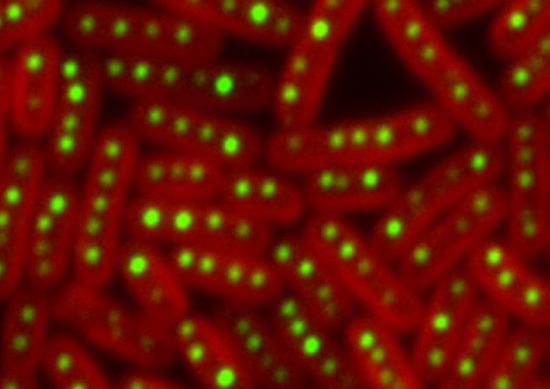
Scientists at Harvard Medical School have succeeded in discovering how the cyanobacteria fixes carbon and ultimately digests it. Pamela Silver, HMS professor of systems biology, says that the rod-shaped bacteria organize soccer-ball-shaped, miniature factories called carboxysomes inside themselves spatially. Absorbing carbon dioxide and converting it into sugar, these bacteria produce energy. David F. Savage, Bruno Afonso, and Anna H. Chen were the other researchers involved in the study.
Research fellow David Savage says…
It’s amazing that you can generate this regularity and symmetry potentially from a single protein. It’s amazing that it is somehow tuned by the dynamics of the protein.
Carboxysomes are generally arranged in a single-file row owing to the presence of a single protein, called parA. When researchers disabled them to make parA, the carbon fixing was relatively lowered.
Might help in creating designer bacteria in future:
Knowledge about how cells create and deploy specialized factories like the carboxysome opens the way to creating other kinds of mini factories that could perform useful functions.
Said Richard Losick, Harvard University professor of molecular and cellular biology.
Via: Physorg

